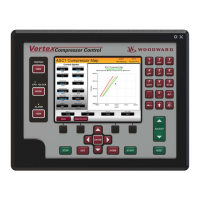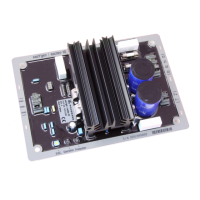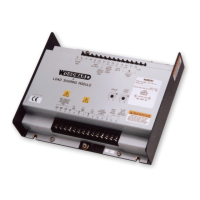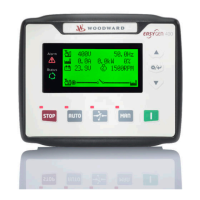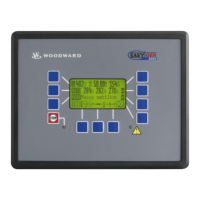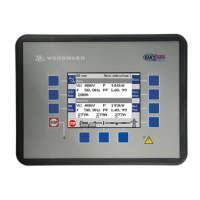Manual 37128A GCP-20 Series - Genset Control
Page 174/190 © Woodward
Procedure
If the transmitter is ready for the data transmission, it informs the receiver by setting its control wire RTS into the
"ON"-status. The prerequisite of this is that no data are received (CTS = "OFF"). The receiver registers this status
and indicates its readiness for reception by switching its RTS line to "ON". The transmitter can then begin trans-
mitting when it detects this "ON" status on its CTS line. As soon as the receiver withdraws its RTS signal
(RTS = "OFF"), the transmitter interrupts its transmission and waits until the receiver is ready to receive again.
The initialization conflict (both subscribers set the RTS line simultaneously) and time-out (one subscriber waits
unsuccessfully for a reply) must be taken into consideration.
Encoding of the current direction
The current direction can be recognized via the code word prefix. A positive transmitted value means outgoing
supply (power output), a negative transmitted value means power consumption (incoming supply).
Coding of the Power Set Point Value
The following power values may be pre-specified: constant/baseload power (C power), outgoing/export power (E
power) and incoming/import power (I power). The real power set point value is transmitted in binary form using
bits 0-13. The control argument must be transmitted in the basis of bits 14 and 15. In this case, the following cod-
ing applies:
Control argument Bit 15 Bit 14
C power 0 1
E power 0 0
I power 1 1
Example:
C power of 150 kW is to be compensated. The value transmitted is then:
01/00 0000 1001 0110 B Ö 4096 H
E power of 300 kW is to be compensated. The value transmitted is then:
00/00 0001 0010 1100 B Ö 012C H
I power of 600 kW is to be compensated. Negative power is transmitted. The value transmitted is then:
11/11 1101 1010 1000 B Ö FDA8 H
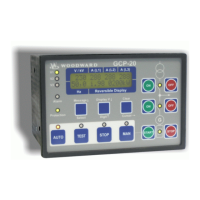
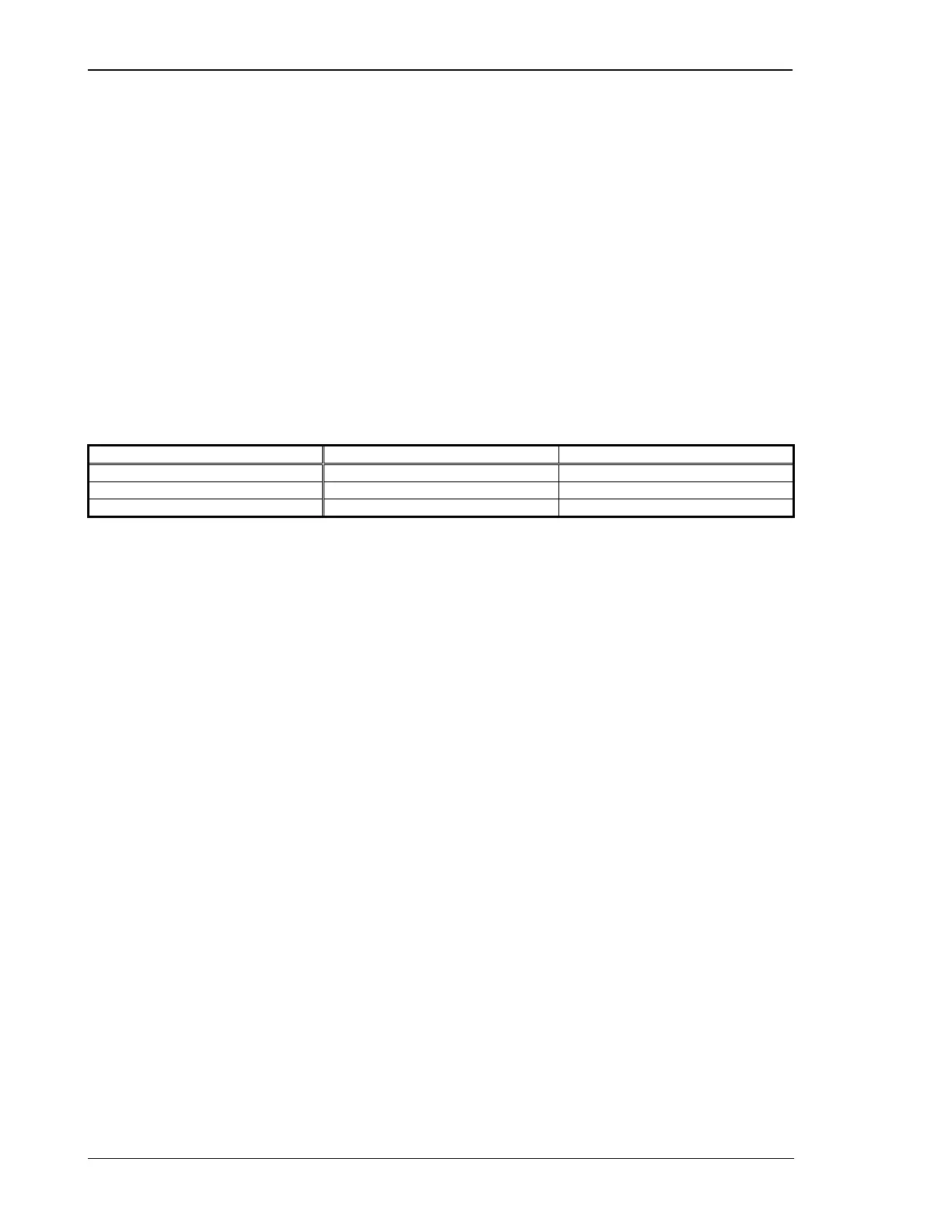